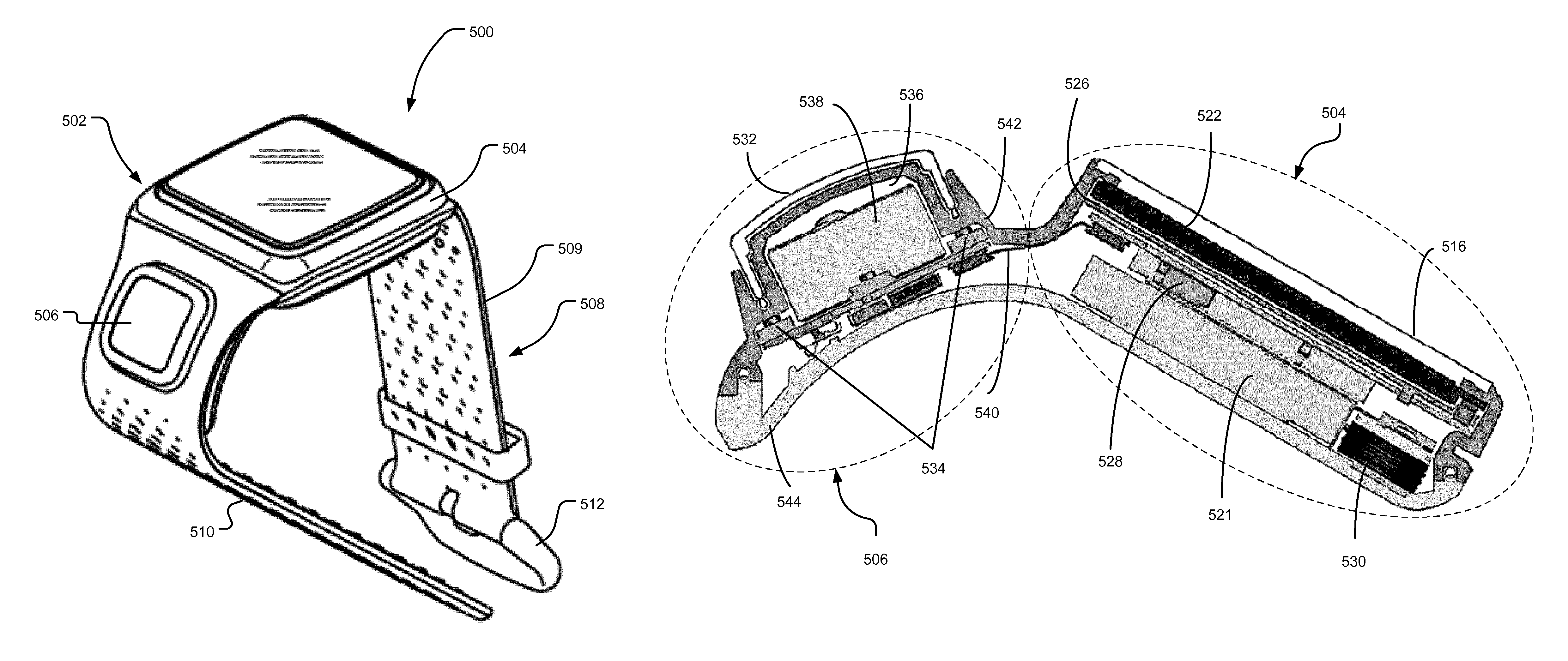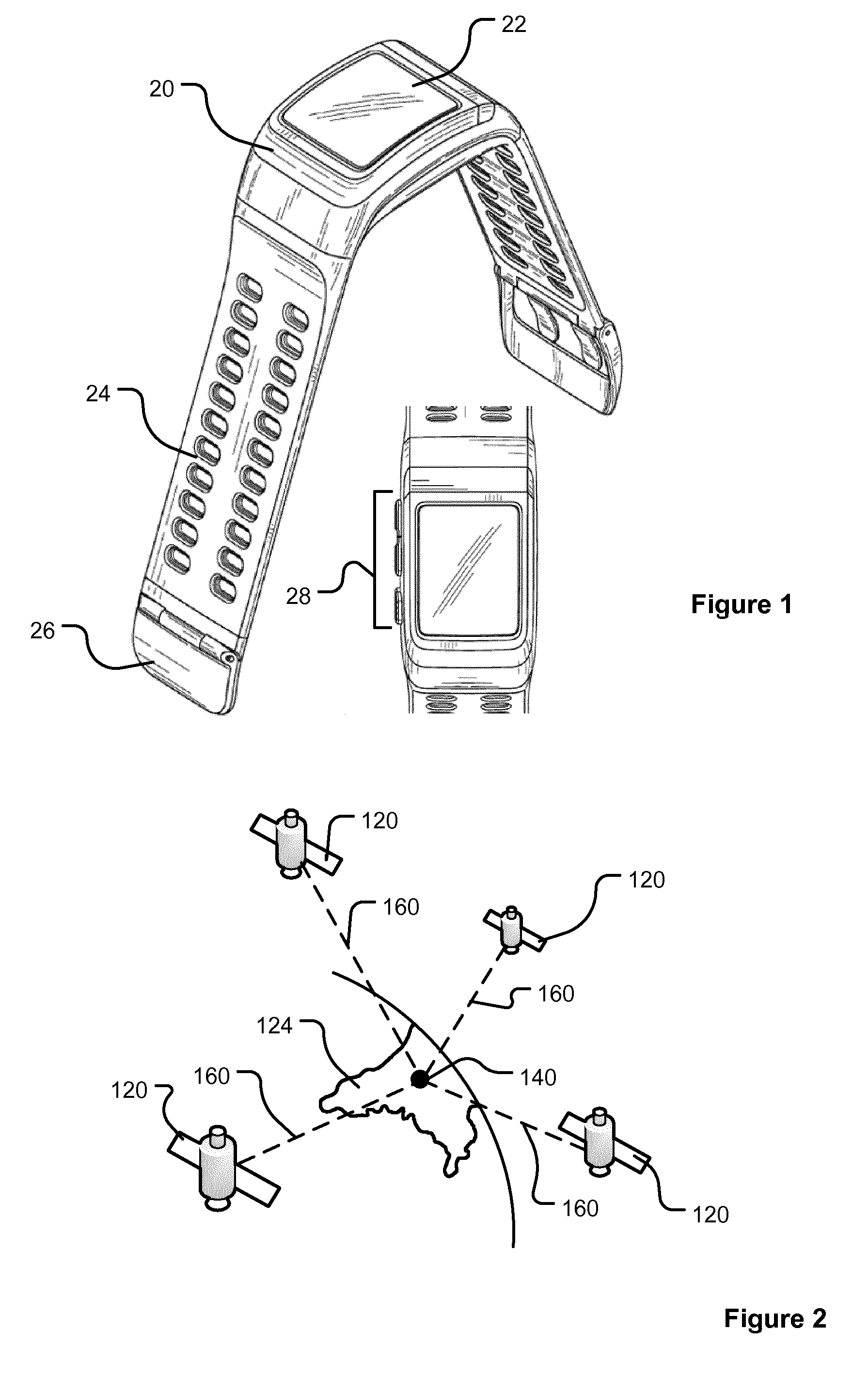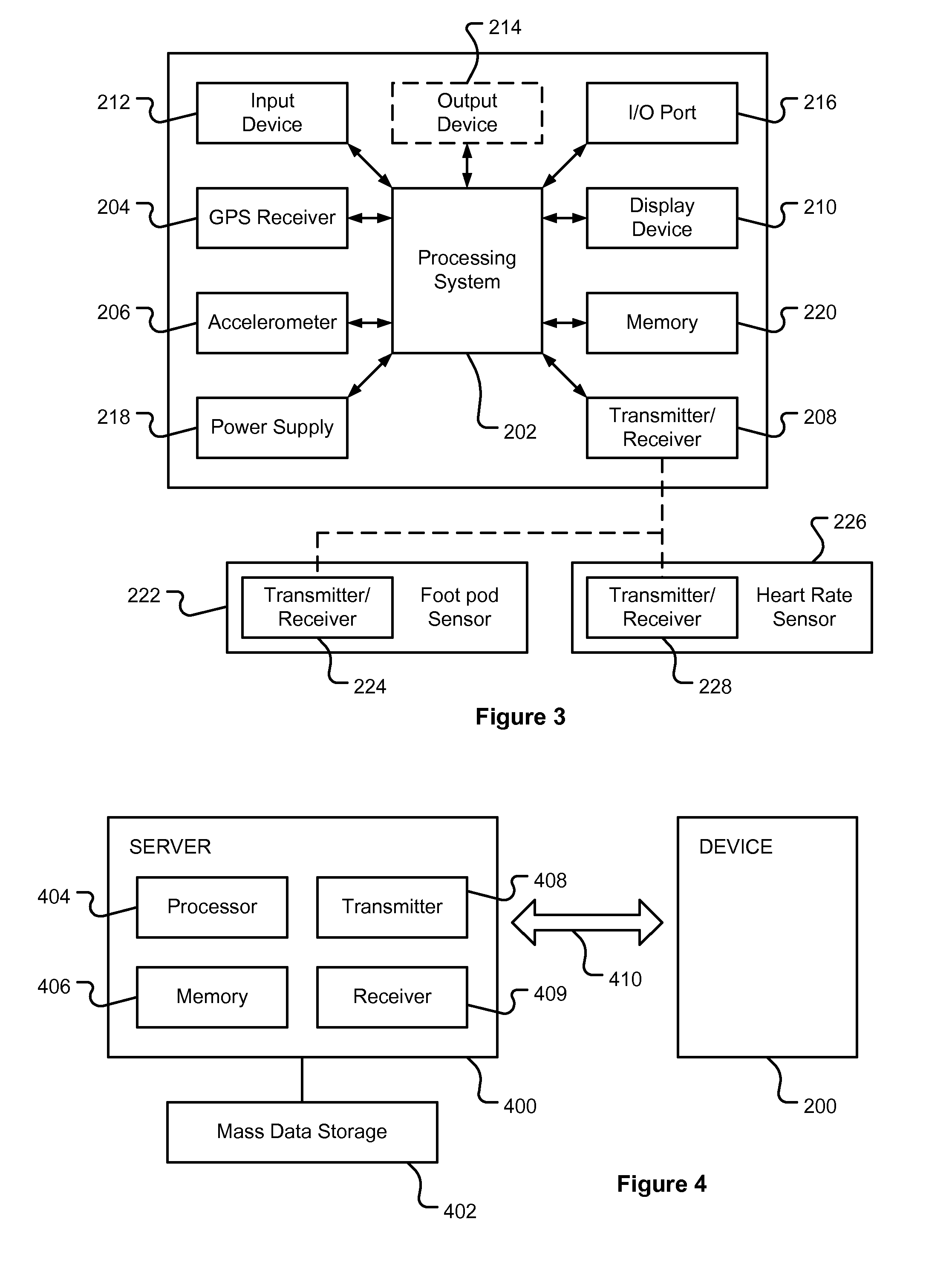Fitness watch case
a technology for fitness watches and cases, applied in the field of cases for fitness watches, can solve problems such as not always easy
- Summary
- Abstract
- Description
- Claims
- Application Information
AI Technical Summary
Benefits of technology
Problems solved by technology
Method used
Image
Examples
Embodiment Construction
[0044]Preferred embodiments of the present invention will now be described with particular reference to a fitness or sports watch having access to Global Positioning System (GPS) data. Fitness or sports watches of the type described are often worn by athletes to help them during their runs or workouts, e.g. by monitoring the speed and distance of the user and providing this information to the user. It will be appreciated, however, that the device could be arranged to be carried by a user or connected or “docked” in a known manner to a vehicle such as a bicycle, kayak, or the like.
[0045]FIG. 2 illustrates an example view of Global Positioning System (GPS), usable by such devices. Such systems are known and are used for a variety of purposes. In general, GPS is a satellite-radio based navigation system capable of determining continuous position, velocity, time, and in some instances direction information for an unlimited number of users. Formerly known as NAVSTAR, the GPS incorporates...
PUM
 Login to View More
Login to View More Abstract
Description
Claims
Application Information
 Login to View More
Login to View More - R&D
- Intellectual Property
- Life Sciences
- Materials
- Tech Scout
- Unparalleled Data Quality
- Higher Quality Content
- 60% Fewer Hallucinations
Browse by: Latest US Patents, China's latest patents, Technical Efficacy Thesaurus, Application Domain, Technology Topic, Popular Technical Reports.
© 2025 PatSnap. All rights reserved.Legal|Privacy policy|Modern Slavery Act Transparency Statement|Sitemap|About US| Contact US: help@patsnap.com



